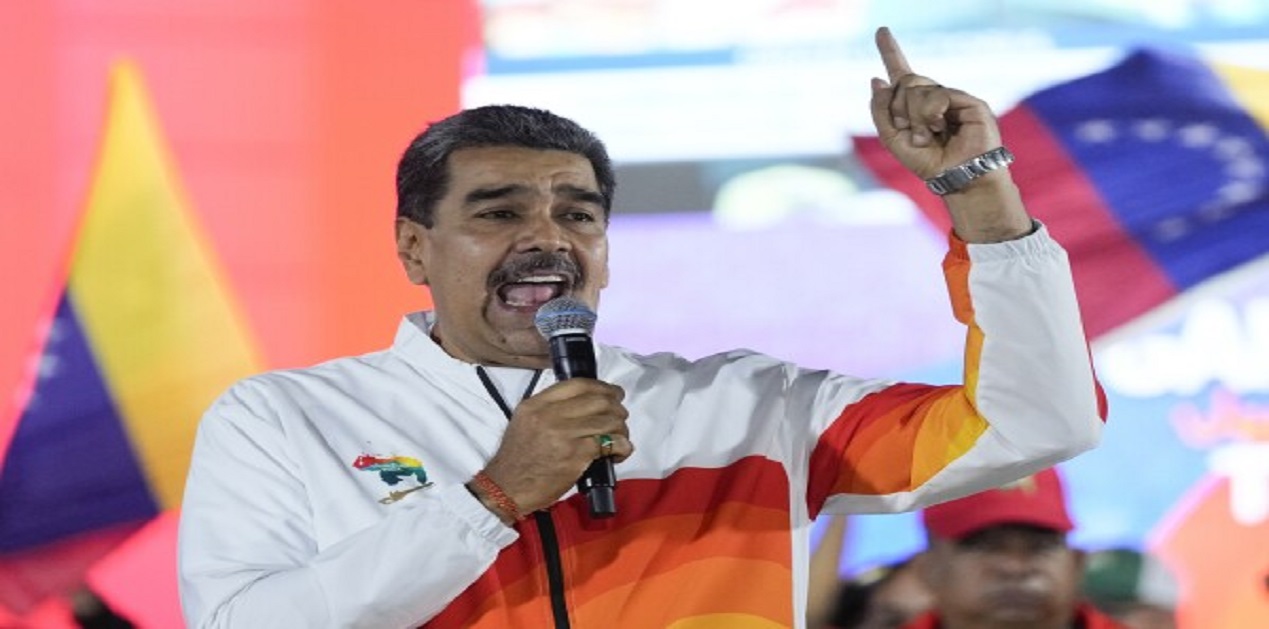On Sunday, 3rd December, Venezuela declared, through a five- question referendum, that the Essequibo province of its eastern neighbour Guyana belonged to Venezuela following which the Venezuelan parliament passed a resolution on 6th December to annex the disputed territory. Though no military adventure has so far been initiated by Caracas in support of the resolution, it has warned the oil companies involved in the Essequibo region tostop their operations with immediate effect. Venezuela also declared its intention to soon begin the auctioning process for granting the concessions for the disputed region. It is to be noted that, according to an estimate, Essequibo possesses an estimated reserves of 10 billion barrels of high-API crude valued roughly at one trillion dollars. But given the flexing of its military muscles by Venezuela, the region has emerged as yet another flash-point with a high possibility of exploding in a war in near future if not checked in time.
The dispute between the two nations over the Essequibo region, which spreads over an area of around 1,59,500 square kilometres i.e. roughly two-third of Guyana’s entire land mass and one-sixth of its population, is not new. In late eighteenth century, Spain created the Captaincy General of Venezuela and the Essequibo region was made a part of Venezuela. But much later in 1899, in an arbitration settlement reached in Paris between Venezuela and the United Kingdom- the then colonial power of Guyana, the international boundary was re-demarcated and the area between the Essequibo River and Schomburgk line, drawn by Robert Schomburgk commissioned by the UK to survey the area, was given to Guyana. However, the successive governments in Caracas kept on clamouring from time to time, albeit weakly and in a mild tone, against this settlement. But in 1970, after Guyana got independent, the question was placed before the UN Secretary General, who, in turn, referred the dispute to the International Court of Justice. Venezuela twice contested the jurisdiction of the court in The Hague which, on both occasions, ruled that it had the power to hear the case. The case gained new momentum in 2015 with the discovery of huge oil reserves in the region by Exxon Mobil. The ICJ has last week warned Venezuela against any attempt to unilaterally change status quo until the final judgement is delivered in The Hague.
One may ask why Venezuela is raking up this issue now with new vigour and upped the ante. Three reasons can be assigned to the recent Venezuelan action. Firstly, as in case of any dictatorial government, Nicolus Maduro, the Venezuelan President, also wants to divert the public attention from the economic collapse of the country resulting in high inflation, soaring unemployment and mass emigration out of the Bolivarian Republic, to the prospect of snatching back a region which was “unjustifiably given to Guyana”. Secondly, with oil getting more and more scarce due to the Russia- Ukraine conflict, the prospect of the new- found wealth in what was once a part of Venezuela is being seen by its leadership as a potential chance to boost its falling popularity and support the ailing economy. Thirdly, the anti-US Venezuelan government, emboldened by its growing proximity with China-Russia -Iran axis and the weakening power of US Dollar, has grabbed this opportunity to challenge the US hegemony in the region.
However, on its part, Guyana has made is abundantly clear that it would not secede any part of its territory to Venezuela as the latter is bound not only by the Paris accord but also by the primary ruling of ICJ in favour of Guyana. In an interview with CNBC, Guyanese President Mohammed Irfaan Ali has categorically stated that, besides its efforts to resolve the issue through diplomatic means by involving the international community including the support from OAS and CARICOM, Guyana is prepared to respond even militarily in case of any armed attack by Venezuela as the USA would come to Guyana’s rescue in terms of the bilateral defence agreement. Throwing its weight behind Guyana, the United States has clarified that it is fully backing Guyana against Venezuela’s threat to annex the region. In a call with Guyana’s President Irfaan Ali on 6th December itself, US Secretary of State Antony Blinken reaffirmed Washington’s position that Guyana has full sovereignty over the region.
Maduro also announced the creation of a Comprehensive Defence Operational Zone for the territory in dispute. This announcement is in “absolute defiance of international law” according to the Guyanese President. “Should Venezuela proceed to act in this reckless and adventurous manner, the region will have to respond and that is what we’re building-we’re building a regional response,” Ali said. He also revealed that Guyana has requested India also to help defuse the tension as the latter has friendly relations with both the parties of the dispute. Though Ali categorically stated that the Guyanese position on Essequibo region was absolutely “non-negotiable”, he however agreed, under the pressure from neighbours and CARICOM members, to meet Maduro on Saint Vincent on 14th December. The proposed meeting will be chaired by Ralph Gonsalves, the Prime Minister of St. Vincent with Brazil, which has deployed its troops at its northern border with Venezuela and Guyana, attending as an observer. With both parties vehemently sticking to their positions, any positive outcome of the scheduled meeting is highly unlikely.
What happens in case the talks fail and Venezuela invades Guyana to annex the disputed region from Guyana? In case of such a misadventure against Guyana, Venezuela would most likely be isolated. Maduro Government has alienated most of the countries in the LAC region. Though on 4th January, 2019, thirteen out of fourteen Lima Group countries questioned the legitimacy of the Maduro government, the effect of the ‘pink tide’, which came later and which could have served as a morale booster to the leftist Venezuela, could not last long. Not only is the new rightist government in Bunos Aires against the Maduro regime, a socialist Lula in Brasilia is also believed to be ‘not comfortable’ with the firebrand Venezuelan President. Besides these two South American giants, many countries in the region and all most all Caribbean nations (understandably barring Cuba) do not see eye to eye with Maduro regime. There is, therefore, very thin possibility of majority of LAC nations supporting Venezuela’s Military action against its eastern neighbour.
If Venezuela came over the border, US will certainly come for rescue of Guyana as it will not tolerate a leftist regime in its own backyard, on which sanctions have recently been eased, browbeat the pro- USA Guyana. In such a scenario of military action of Venezuela, there may come an aircraft carrier battle group and a bunch of amphibs down from Norfolk quickly. Venezuela would certainly not want a Marine division, plus the 82nd Airborne and the 101st Air Assault, coming in.
The only three countries, whose support Caracas can count on, are China, Russia and Iran. But since Venezuela is not in the geographical proximity of any of these ‘friends’, none of them will afford to go beyond extending moral and verbal support to Maduro and certainly not any military intervention. So will act Europe.
AS regards India, the Ministry of external affairs has clarified that India has been “watching the developments” and it “calls for the peaceful settlement through diplomatic means”- a usual response in such situations. India has close relations with both Venezuela and Guyana which makes it difficult to take sides as of now. While we have commercial interest in Venezuela (ONGC Videsh has three concessions in Venezuela and Indian companies including Reliance regularly import crude from there), Guyana has close historical relations with India as centuries ago it had sent indentured labours for sugarcane plantations in Guyana whose posterity had ruled there many years since Guyanese independence. Though it may not be necessary now to make our position clear in favour of either of the parties, we may have to be more pro-active if the violence breaks out there.
(The paper is the author’s individual scholastic articulation. The author certifies that the article/paper is original in content, unpublished and it has not been submitted for publication/web upload elsewhere, and that the facts and figures quoted are duly referenced, as needed, and are believed to be correct). (The paper does not necessarily represent the organisational stance... More >>
Image Source: https://bloximages.newyork1.vip.townnews.com/wfmz.com/content/tncms/assets/v3/editorial/0/a6/0a66b59c-27f3-5191-85b9-31cda4557ec8/656d44d43c1f5.image.jpg?resize=1200%2C800











Post new comment